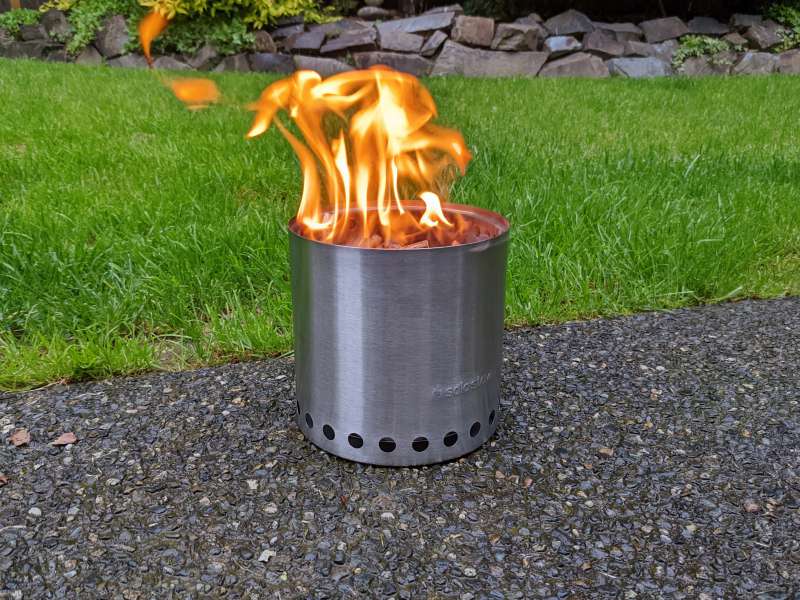
REVIEW – With the unofficial start of summer upon us, it’s time to dust off the camping, hiking, and backpacking gear and prepare for adventure. For me, one of the most important considerations when heading to the great outdoors is knowing when I will be able to eat. Not just when I will eat though, I need to know what, how much, and by what means. With car camping, this is pretty simple since I can bring as much food and cooking equipment as can fit in my trusty FJ Cruiser. Hiking and backpacking present a challenge though since I can only carry so much in my pack.
I still use the Wolf and Grizzly Fire Safe that I reviewed back in March of 2020, but I’ve been meaning to upgrade a bit. Now was a perfect time to review the Solo Stove Campfire. This stove might look like nothing more than a big can with some holes in it, but believe me, it really delivers the heat. The Campfire is a bit pricey at slightly over $100, but if quick and easy outdoor cooking is as important to you as it is to me, it may be worth it.
What is it?
The Solo Stove Campfire is a cylindrical, portable camp stove made from stainless steel. The Campfire is designed to cook for four or more people. Solo Stove also has smaller camp stove models; the Titan which is good for two people and retails for $84.99, and the Lite which costs $64.99 and works well for one.
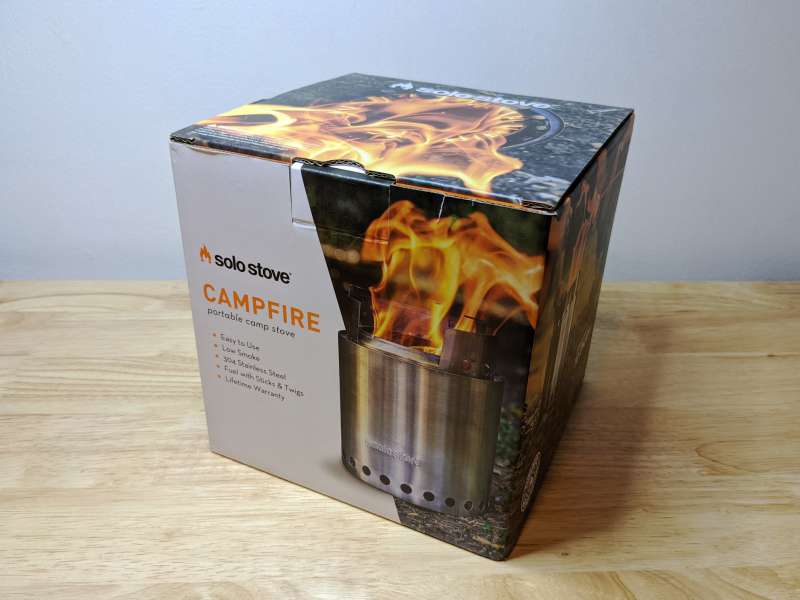
The Campfire ships in a box not much bigger than the unit itself covered with photos and specs for the stove.
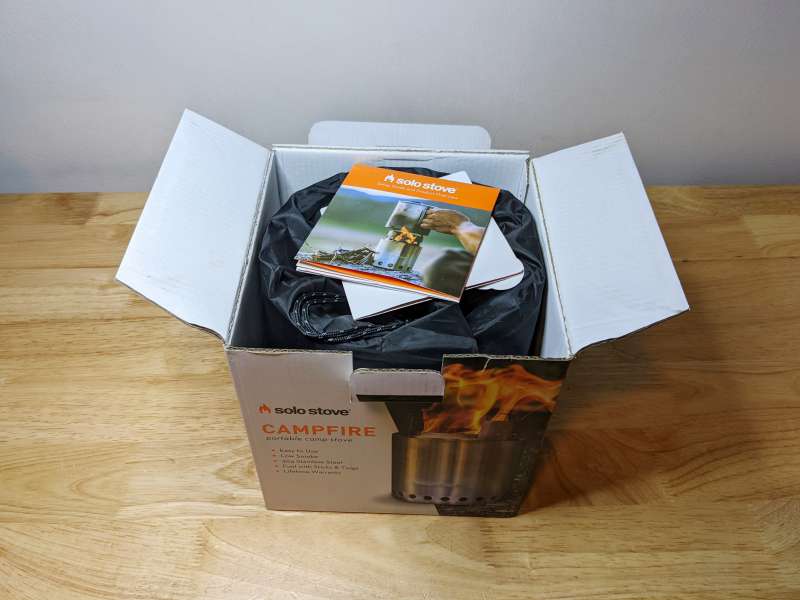
What’s in the box?
- Solo Stove Campfire
- Carrying bag
- User manual
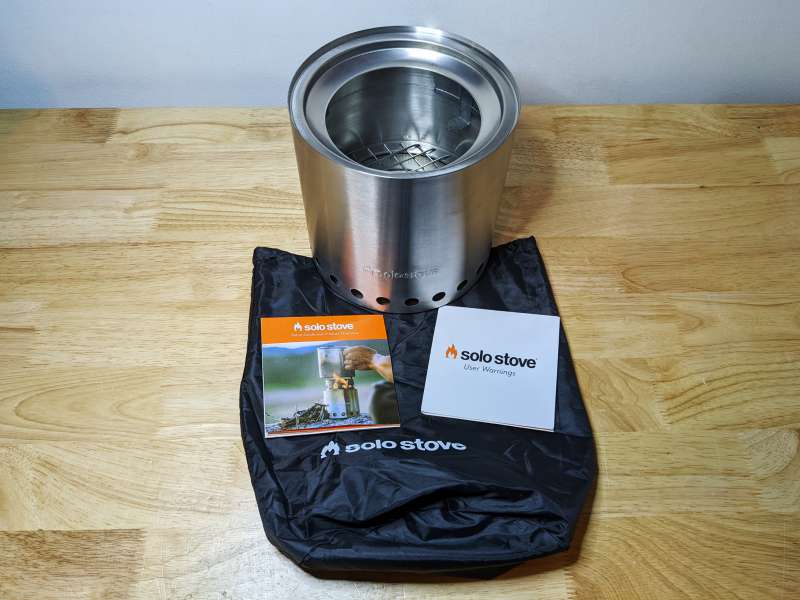
Hardware specs
- Materials: Grade 304 stainless steel
- Weight: 2.2 lbs.
- Diameter: 7 in.
- Height (with Cooking Ring): 9.25 in.
- Fuel: Sticks, twigs, pine cones and other biomass
- Capacity: Can cook for four or more people
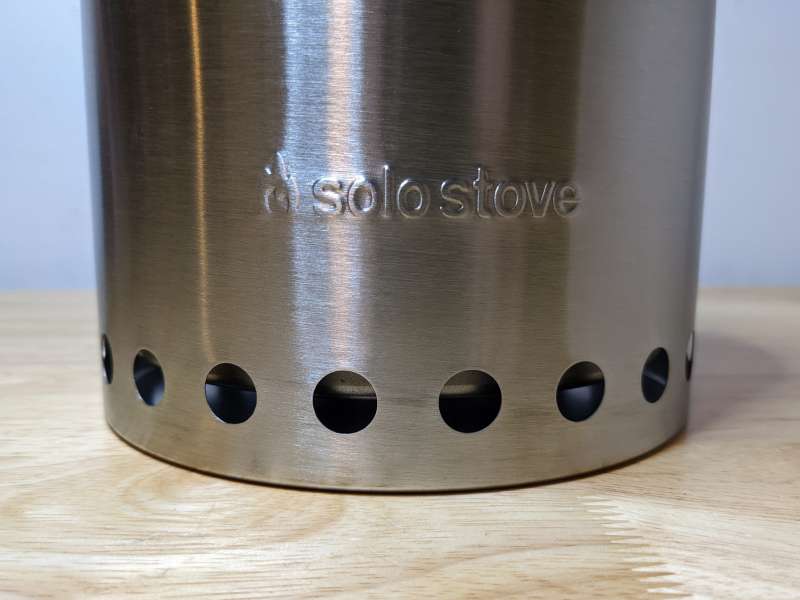
Design and features
The design of Solo Stove’s Campfire is similar to almost all of the other fire pits and camp stoves made by the company. It’s a cylindrical stainless-steel bucket with small holes on the lower exterior and upper interior.
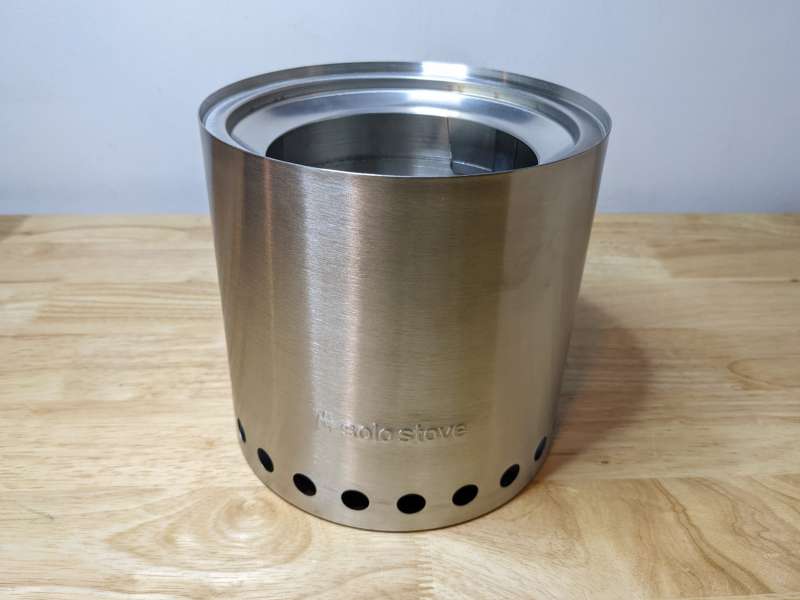
The Campfire comes with a carrying bag which helps to keep residual ash from getting on anything else the Solo Stove Campfire may be packed with. The bag fits a bit too snug though and can be a pain to use especially in low light.
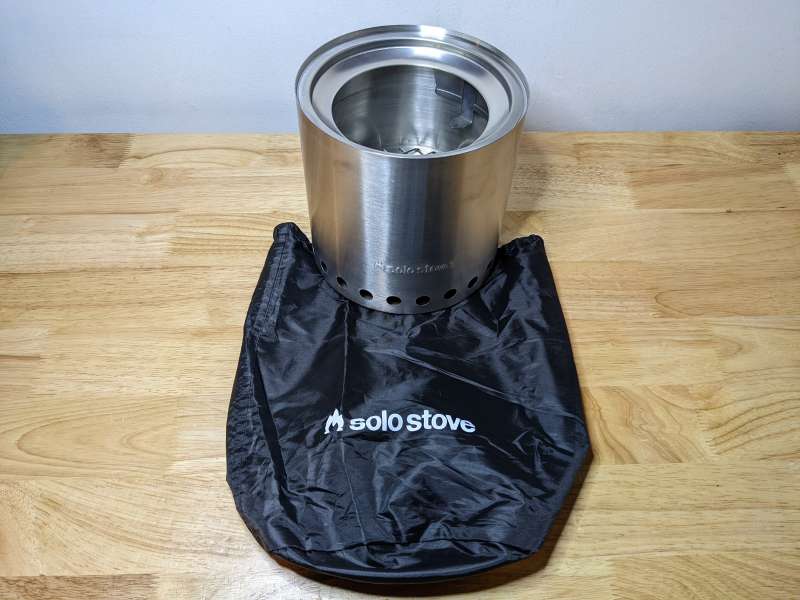
The Campfire consists of two parts; the main body and the removable cooking ring.
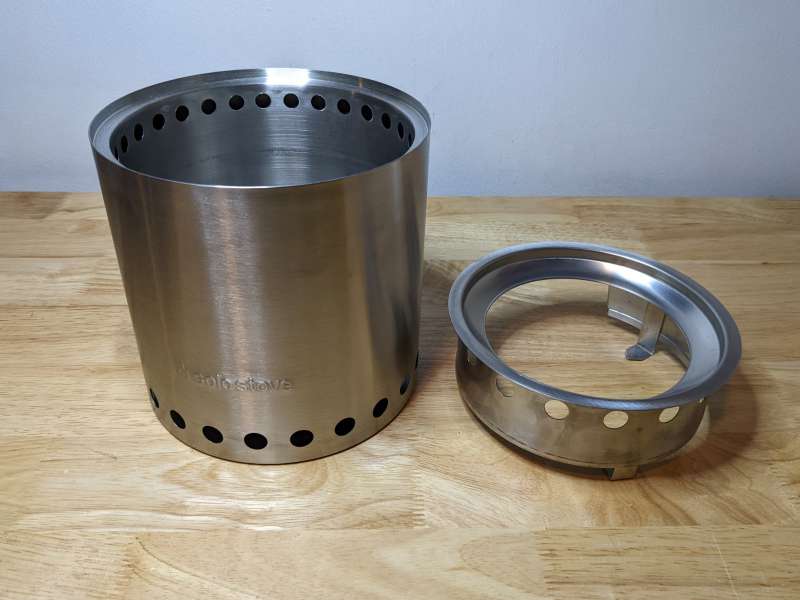
The cooking ring is made of the same grade 304 stainless steel as the body and it’s designed to sit on top of the body for use and fit inside the body for storage.
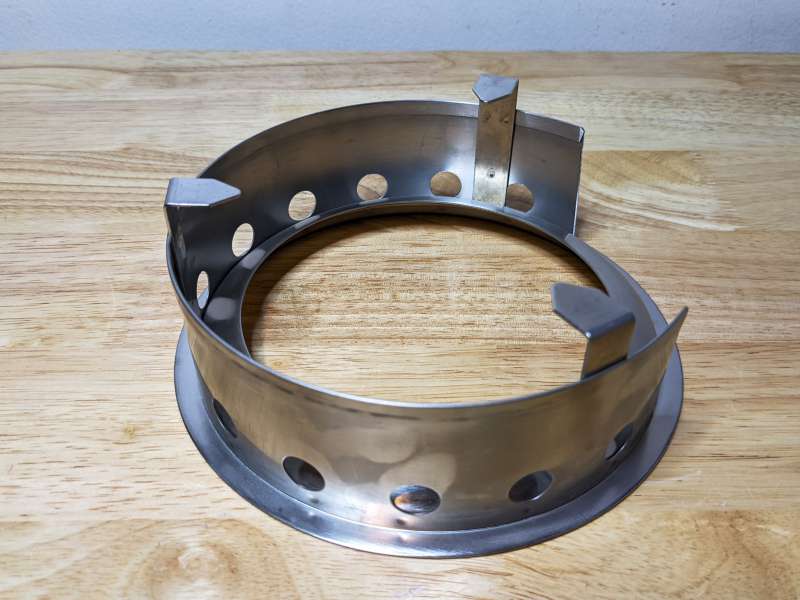
The cooking ring has three tabs folded at 90° which protrude up from the body a bit. When cooking, a pot or pan rests on top of the tabs allowing for plenty of airflow and heat to circulate underneath.
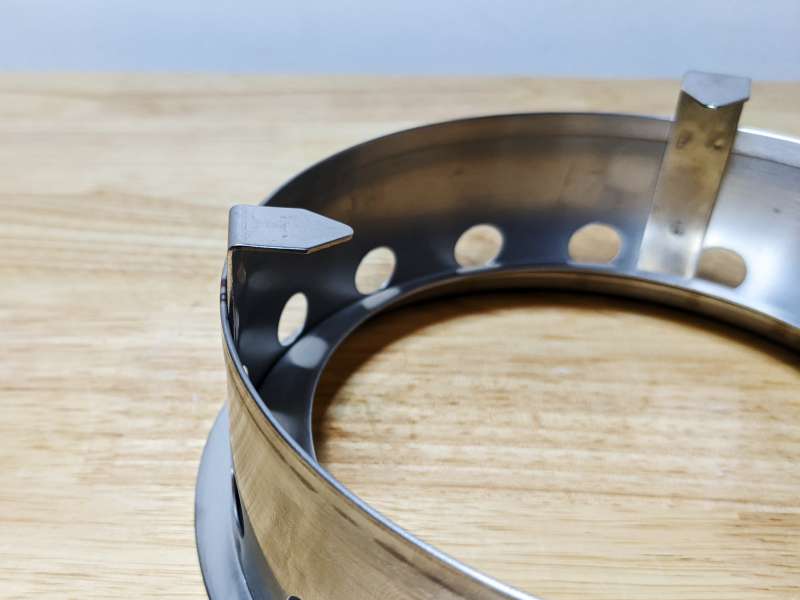
One section of the cooking ring is cut out which allows you to feed the fire with fuel while cooking.
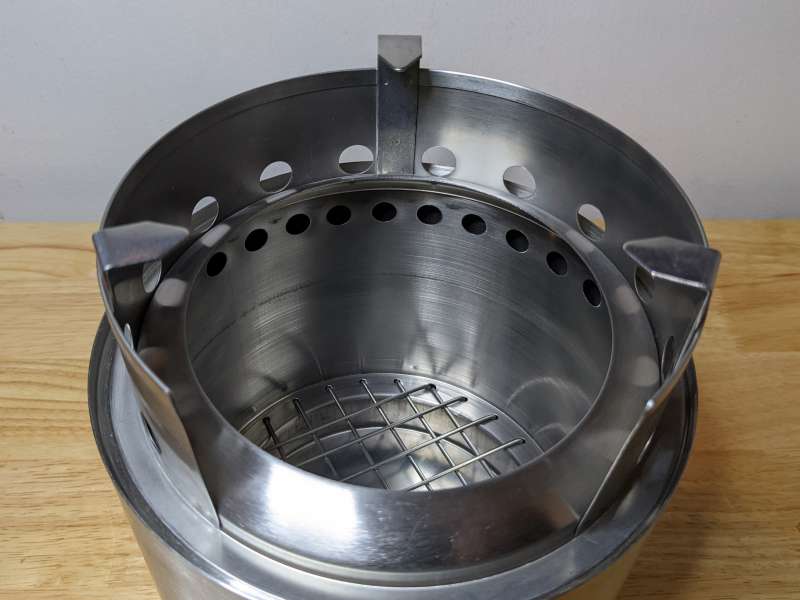
Inside of the Solo Stove Campfire body is an integrated steel mesh. The mesh allows ash to fall through to the bottom of the body preventing it from impeding airflow to the fire.

I wish the mesh was removable because it would make cleanup even easier, but I also like that it means fewer parts to keep track of.
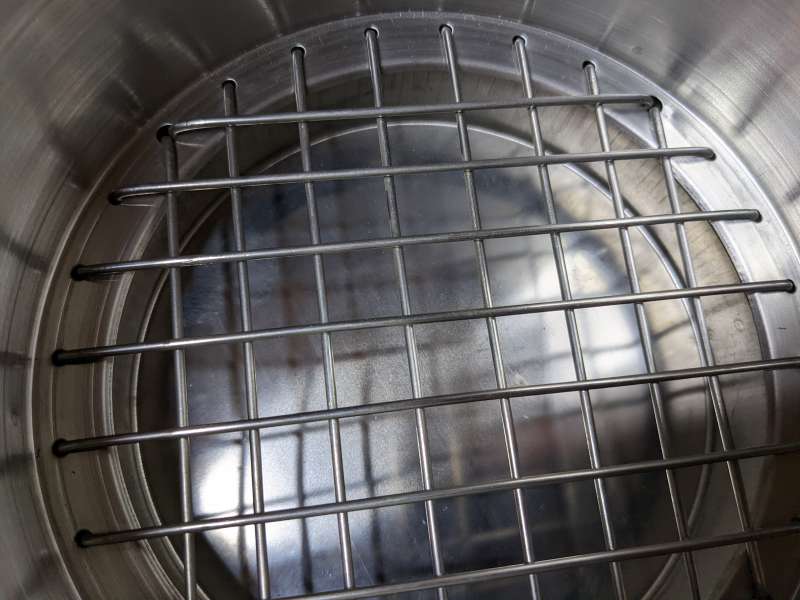
The body of the Campfire is double-walled which allows cooler air to be drawn up through the lower vent holes and then released out of the upper vent holes directly into the flame providing what Solo Stove calls a “secondary burn”.
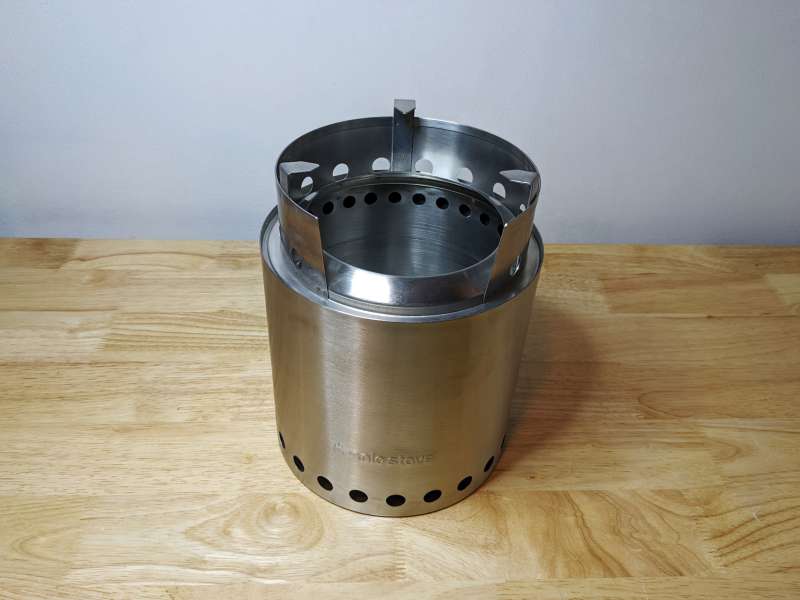
The double-wall construction prevents heat from scorching the area of ground under the Campfire, but be aware that the outer walls do get very hot during use.
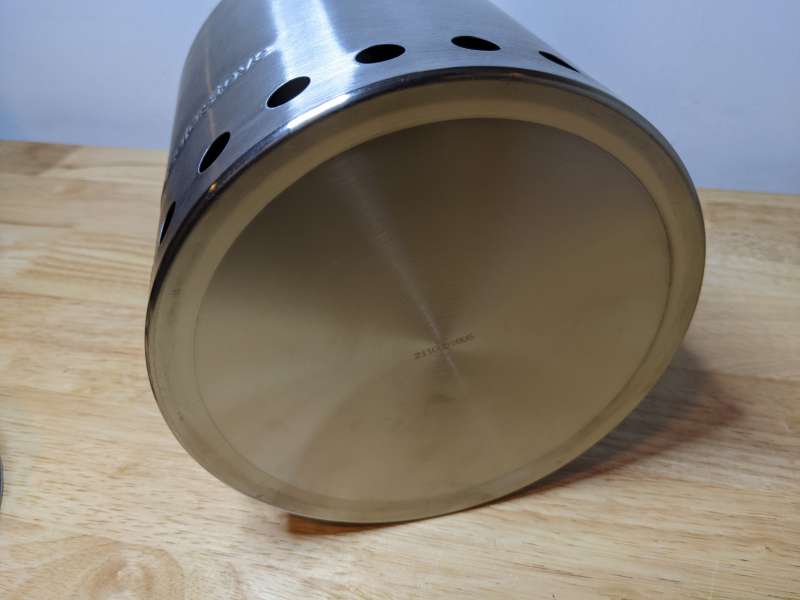
The overall construction of the Solo Stove Campfire portable camp stove and its build quality are impressive. From the brushed steel exterior to the rounded edges on the bottom, the stove itself feels smartly designed and virtually indestructible.
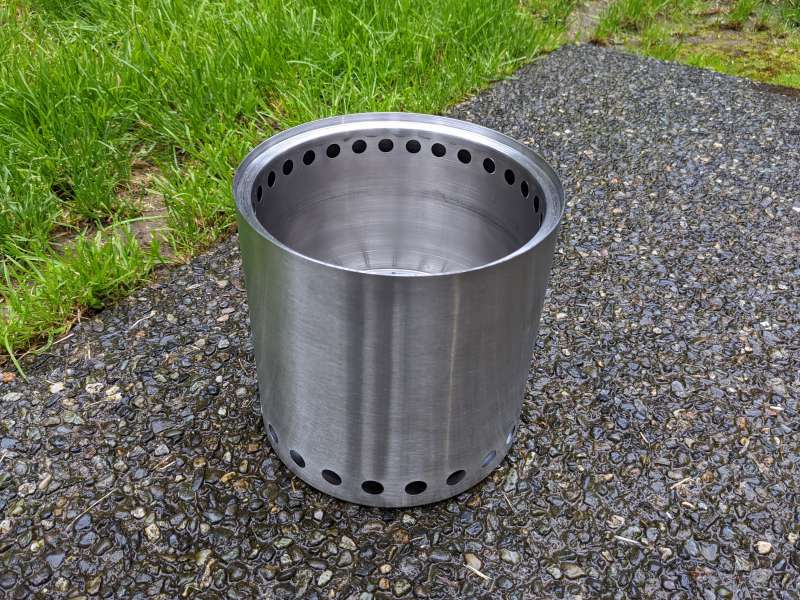
At just over two pounds, seven inches around, and over nine inches high with the cooking ring attached, the Campfire is bigger than most camp stoves. I don’t think it makes sense to throw it in my backpack when I have more compact options available like the Wolf and Grizzly Fire Safe. But when space isn’t an issue, the Campfire is a good option to have.
Setup
Setting up the Campfire is quick and easy, as long as you find some level ground that’s clear of any flammable material. Since the Campfire burns biomass the only other step is gathering up the fuel.
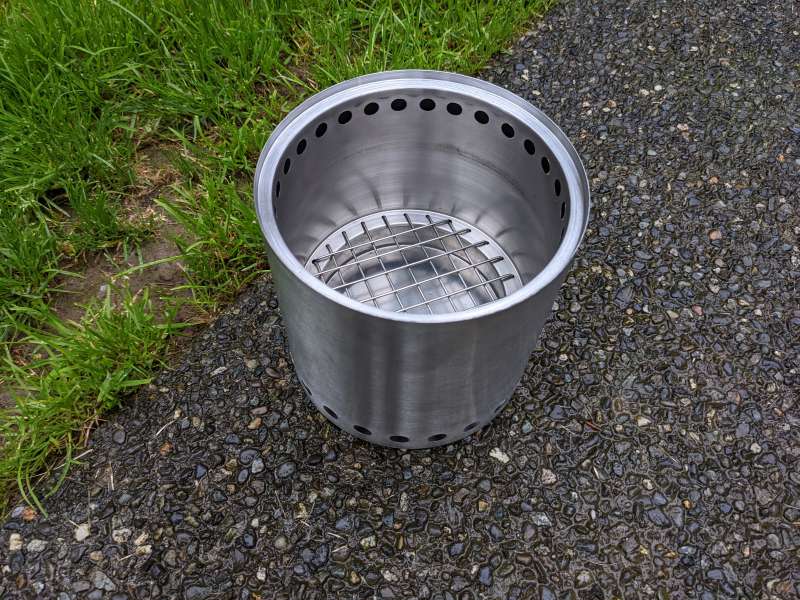
Finding fuel for the Solo Stove Campfire is easy if you’re in a wooded area. Dry twigs, pinecones, and leaves will burn well in the Campfire but for the best fire Solo Stove recommends dry hardwoods such as birch, maple, hickory, and oak. It’s also recommended to break up the sticks and twigs into thumb-size lengths.
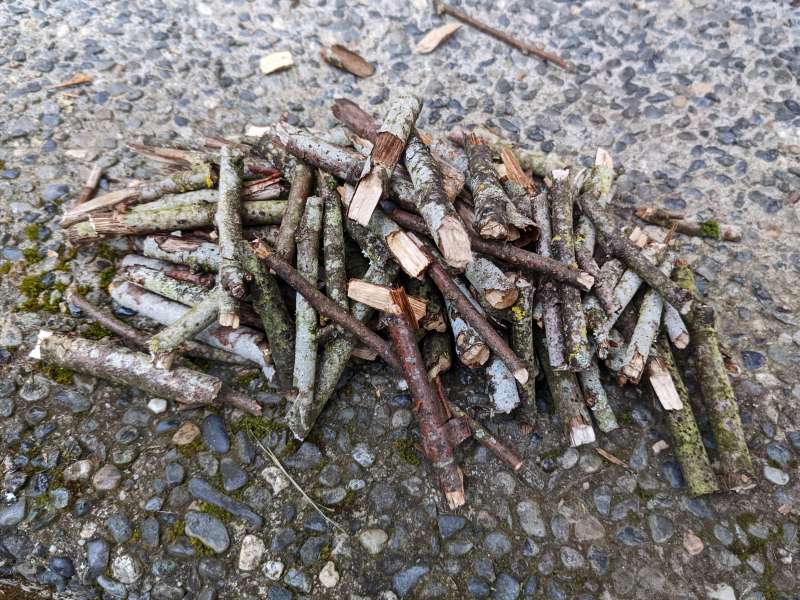
Once the fuel is gathered it’s just a matter of loading the Campfire and lighting it up. Optionally, you can place the cooking ring on top of the body before ignition.
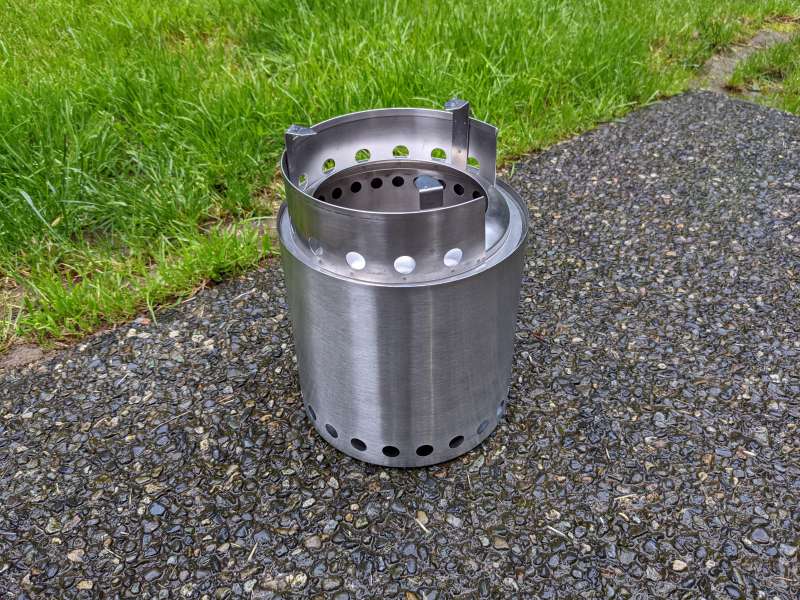
Performance
For as simple as the design of the Solo Stove Campfire portable camp stove is, I was blown away by how well it performed. Starting with just two or three handfuls of twigs, a couple of pine cones, and some dryer lint we had a super-hot, practically smokeless fire going in about a minute.
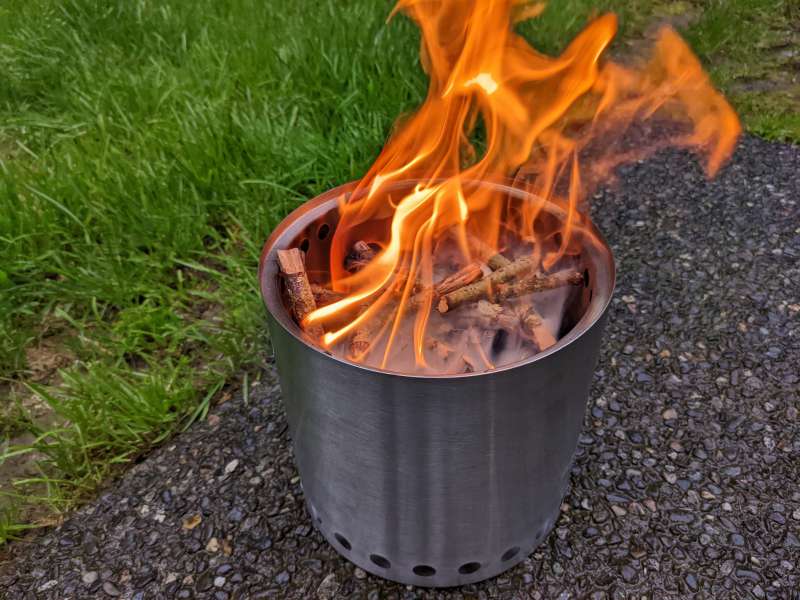
Really the only smoke we encountered was in the initial burn due to the ever-present Pacific Northwest moisture soaked into our wood. Once the moisture burned off though, there was barely any smoke and a whole lot of heat.
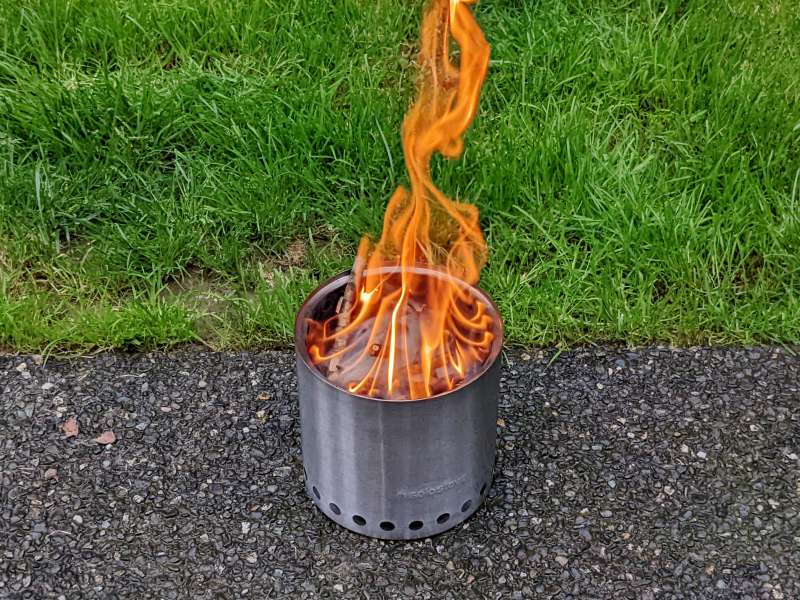
You can actually see in the photos how well the vent holes work to channel oxygen right into the flames. The heavier colored flames are all coming directly from the vent holes.
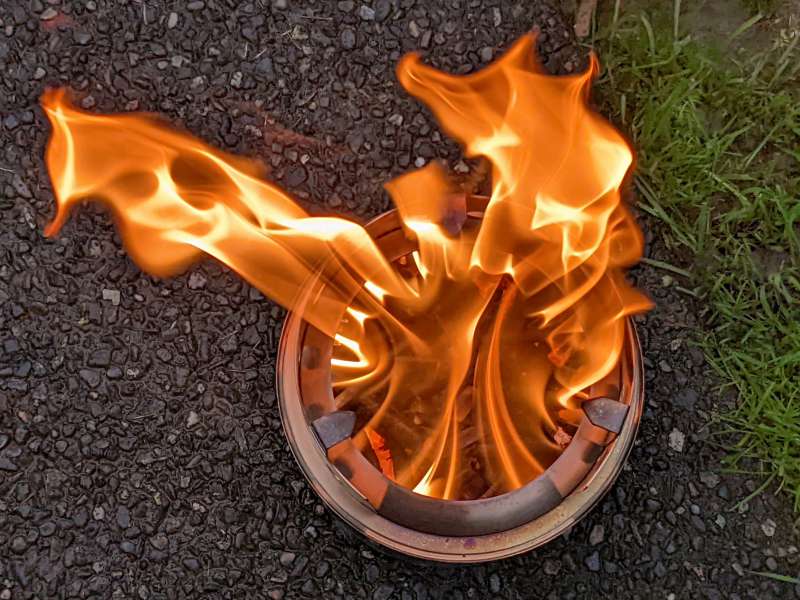
After placing the cooking ring on top of the body its vent holes seemed to concentrate the flames even more.
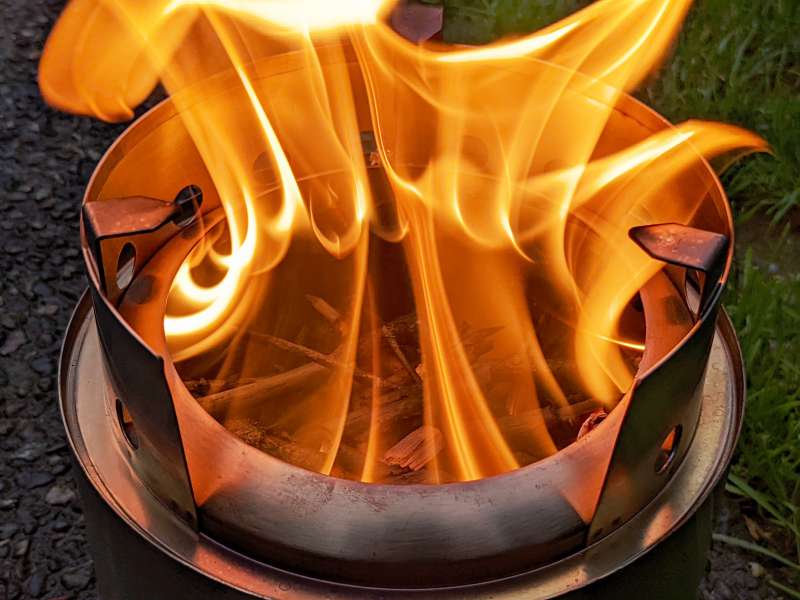
To capitalize on the heat, we quickly put a pot of water on top of the cooking ring. The Solo Stove Campfire had the water boiling in no time at all. I was a little leery of how the cooking ring tabs would support a large pot, but it wasn’t an issue and the pot stood firm.
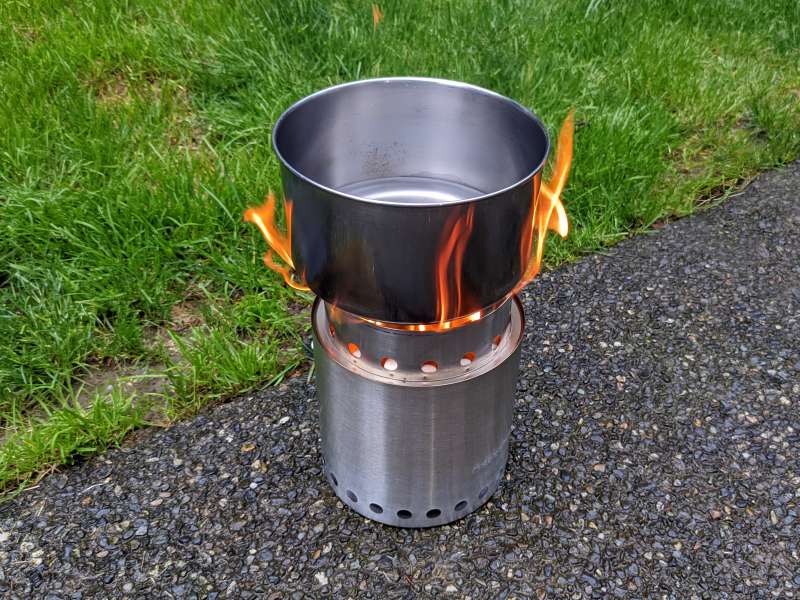
The high heat also consumed the small mass of the fuel quickly so the Campfire needed to be fed frequently. The cutout on the cooking ring came in handy here, especially with a pot cooking on it.
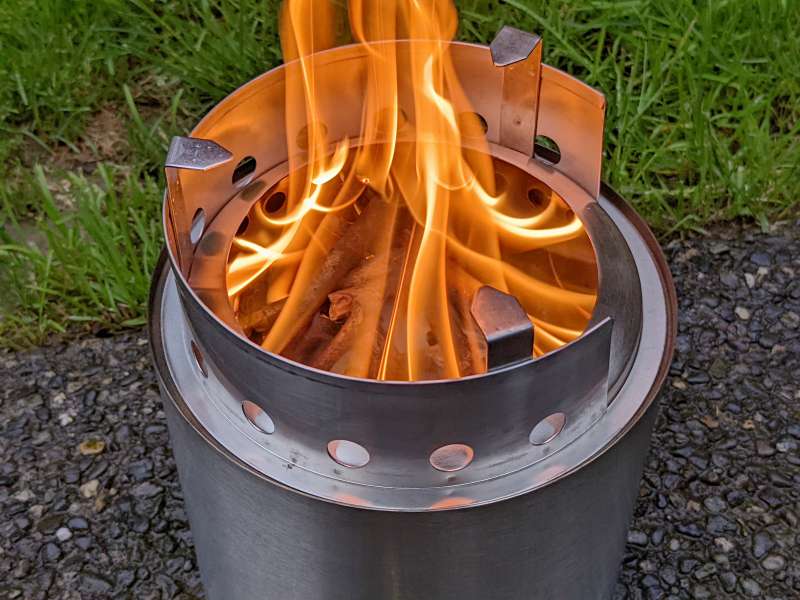
Also because of the incredible heat, the cooking ring and interior of the body both quickly developed a slight patina.
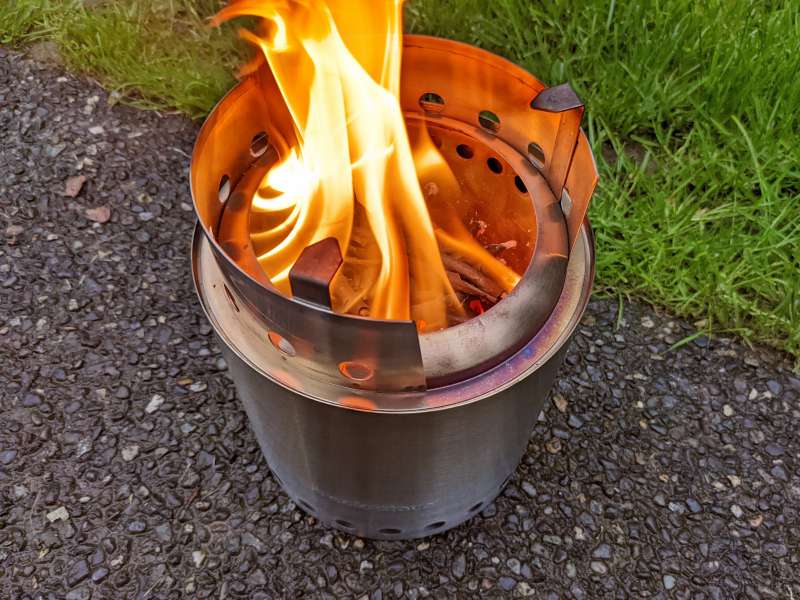
After feeding the Campfire all of the pinecones, twigs, and leaves we could find we finally let the fire burn itself out.
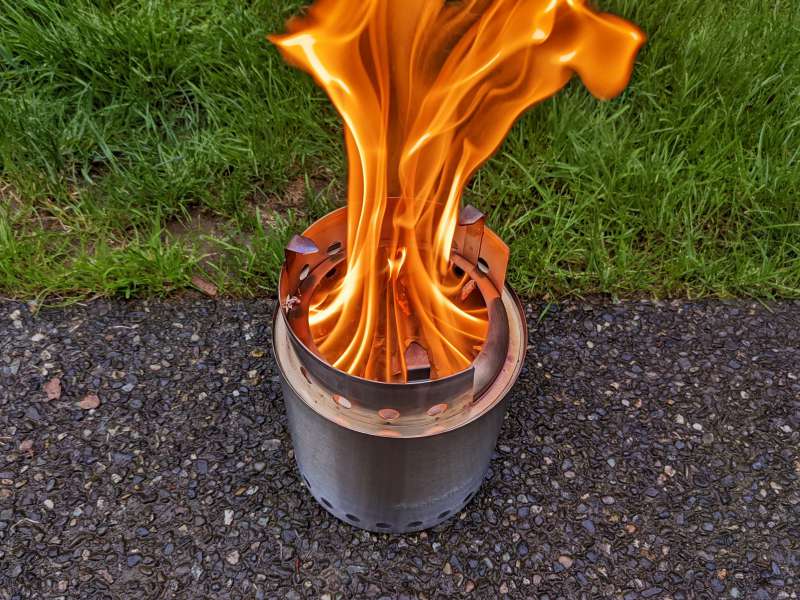
It didn’t take too long for the flames to die down, but it was a while before the heat of the coals at the bottom of the Campfire cooled. If we wanted to cook again later, it would’ve been easy to just drop some fresh fuel onto the coals and get the fire going again. Another testament to the great design and usefulness of the Campfire in the field.
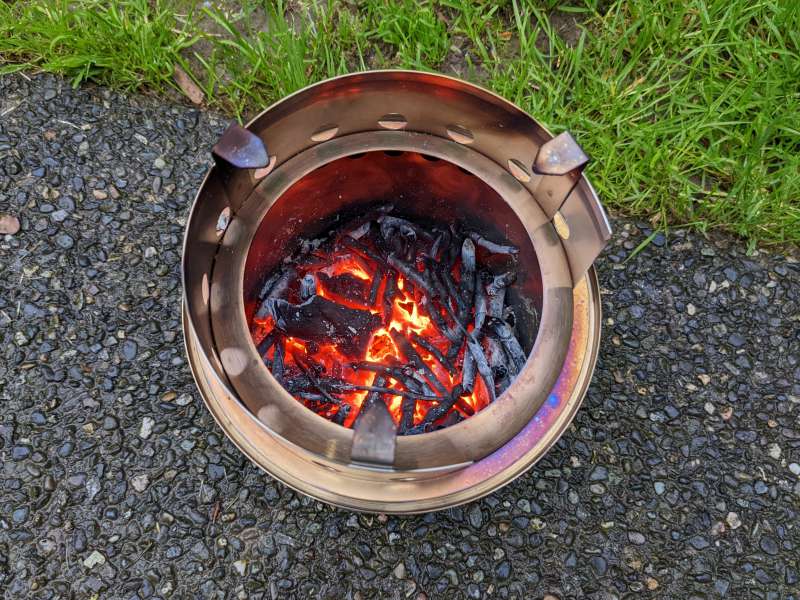
Because of how hot the metal of the Campfire gets Solo Stove advises to never put the fire out using water since it could be dangerous. Our Campfire finally cooled down after about 35 minutes. Everything was turned completely to ash except for the cores of a few pine cones.
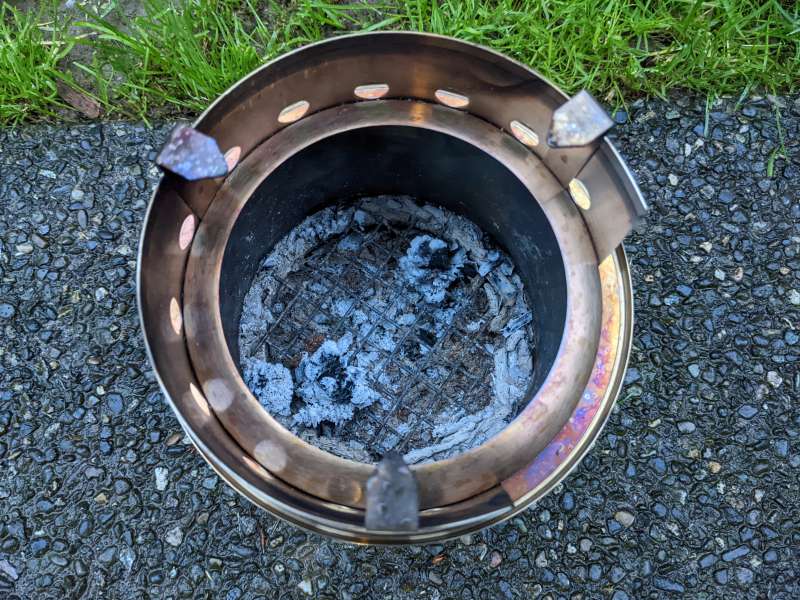
The patina on the cooking ring remained after cooling, but I don’t mind it very much since I plan on using the Campfire a lot.
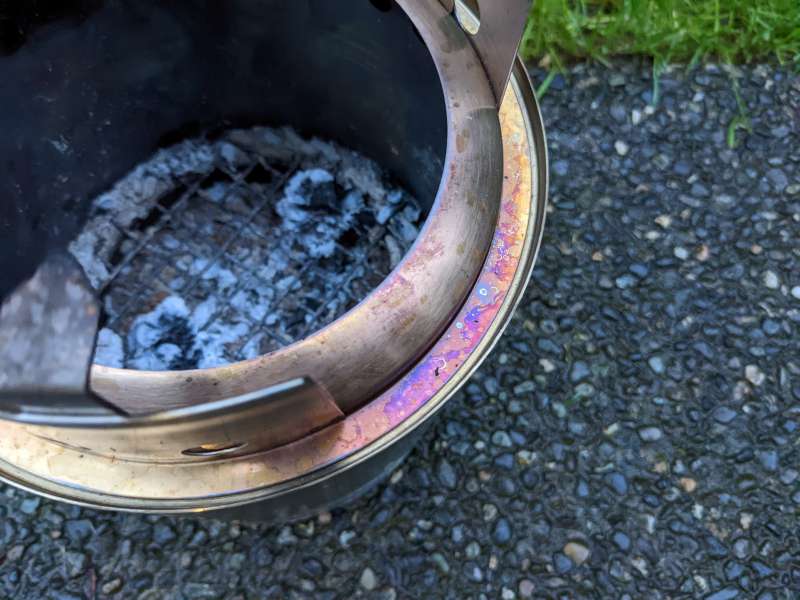
Cleanup wasn’t bad at all, simply tipping the Solo Stove Campfire portable camp stove over and making sure the ashes were completely cooled along with a quick wipe down was all it took. Though I was annoyed by one tiny little burnt twig that I just couldn’t get past the mesh. Another reason why a removable mesh might have come in handy.
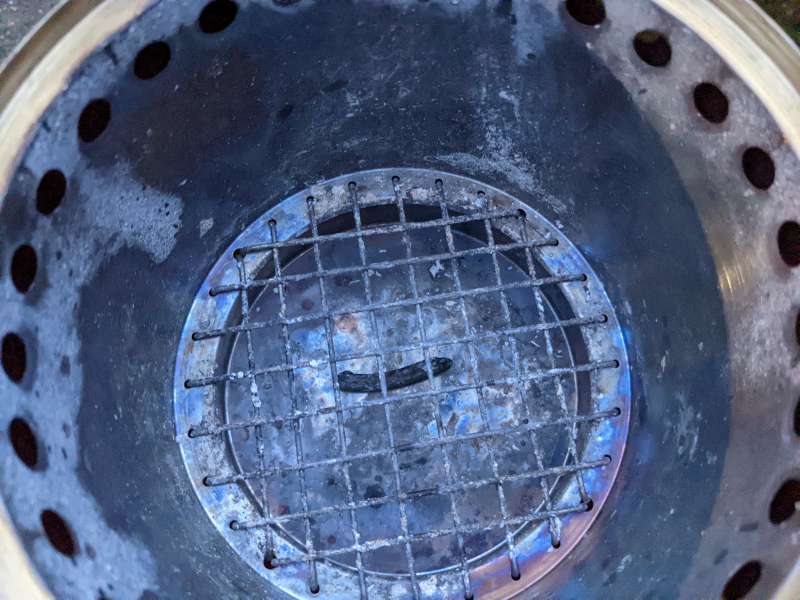
Overall, the Campfire performed exceptionally well. For someone who doesn’t like lugging along camp stoves with complex assembly and disassembly instructions as well as volatile fuel tanks or cans, the Campfire is a great choice. With just the sticks and pinecones we found around our campsite we were able to get a blazing hot, virtually smokeless campfire going quickly. More importantly, we were able to get hot food into our hungry mouths in no time at all. Happy campers all around because of the Campfire.
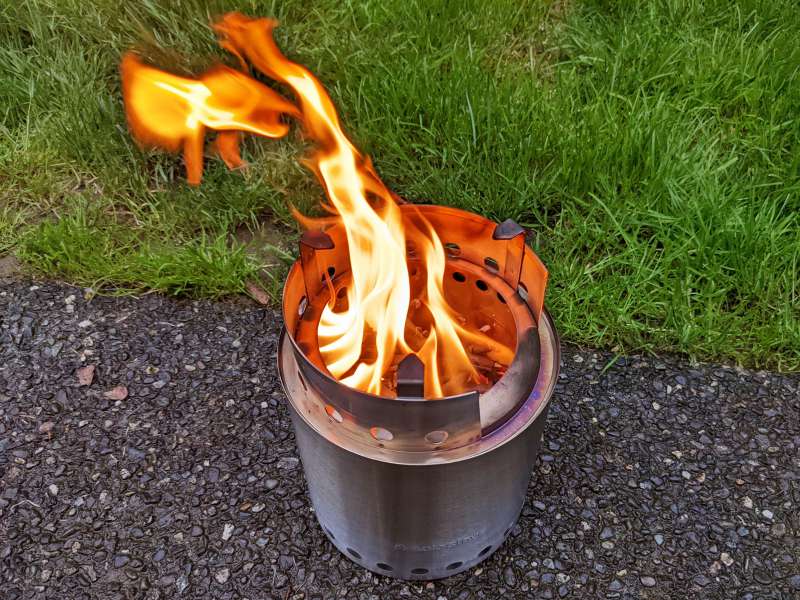
What I like
- Starts quickly and burns very hot
- Very low smoke
- Easy cleanup
What needs to be improved
- Form factor might be too big for backpacking
- Expensive
- Depending on the fuel used it might burn dirty
Final thoughts
The Solo Stove Campfire portable camp stove has become a permanent addition to my camping gear. Because of the weight and large size, I’m not sure if I’ll be taking it on long hikes or backpacking, but for short overnights or car camping, it’s absolutely perfect. The Campfire lights quickly, burns hot, and cleans up in a snap. Even better is not having to remember to bring fuel along; as long as there are sticks and twigs, I’ll be able to have a hot meal. The higher price of $104.99 might be a hurdle for some since there are tons of cheaper camp stoves on the market, but the construction, innovative design, and ease of use justify it for me.
Price: $104.99
Where to buy: Amazon and Solo Stove
Source: The sample of this product was provided by Solo Stove.



Gadgeteer Comment Policy - Please read before commenting
Can u burn this on a deck? Do u have to put something between the bottom of the stove n surface it’s sitting on?